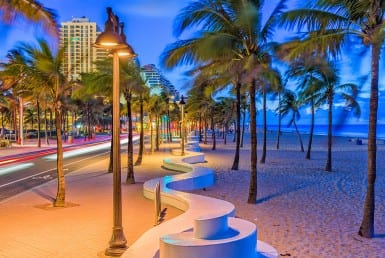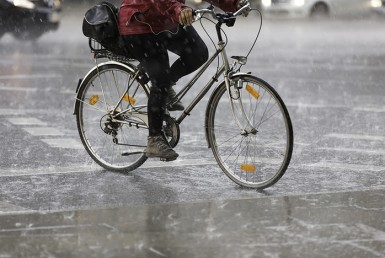Le Golf National: a hole-by-hole guide to 2018’s Ryder Cup course

1st: En Avant
As if a Ryder Cup opening wasn’t scary enough, water lies all the way down the left-hand side, as can be particularly tricky depending on wind speed and direction. An iron or fairway wood off the tee will leave a mid-iron into a green guarded by water and two bunkers.
Related: PGA National being sold for $233 million
2nd: L’Apontage
More water is in play to the left of the par-three. Prevailing wind is behind, meaning it is hard to stop the ball on the green. Finding the putting surface on the right is the safest play.
3rd: Le Mérantais
Extended in 2004, the first par five is reachable in two with an accurate drive to the left side of the fairway. A large tree and bunker guard each side of the green, although the generous sand trap won’t present many problems for Ryder Cup players.
Related: PGA National being sold for $233 million
4th: Châteaufort
New fairway bunkers mean players will need to produce a long and straight tee shot to set up the uphill approach to an elevated green, which is full of slopes. A long par four and one of the toughest holes on the course.
5th: Plein Gaz
There is potential for welcome respite on this short par four. Three fairway bunkers guard the corner of a short right dogleg and more lies sand in front of a green which narrows at the back but this presents a chance to be aggressive.
6th: Maïs ou Colza
One of several holes without a bunker, the short sixth is a good birdie opportunity with the biggest difficulty coming in judging the distance of the approach to a green below the level of the fairway. Expect players to use an iron from the tee, followed by a wedge.
7th: Le Dromadaire
A dogleg right which features a tee shot played to a blind, elevated section of a two-part fairway, followed by a tricky approach to the long green which starts narrow but widens dramatically. Out of bounds awaits a wild drive to the right.
8th: Le Green Keeper
A solitary, albeit deep, bunker guards the front of the large green on this par three, where judging the wind is a common difficulty, as is keeping the ball on a seriously sloping green from a tee shot requiring a long iron
9th: Vent Debout
Unlike the 3rd, reaching this par five in two will be impossible for all-but the longest hitters in the event. Everything to the right of the green means trouble, meaning lay-ups and accurate wedge shots will be needed by many.
10th: La Mare aux Foulques
Another short par four but a testing one owing to its uphill nature and the re-appearance of a water hazard, this time on the left. Thick rough protects the right. Short irons from the tee will be common.
11th: Les Grenouilles
A hole which underwent major changes in 2016, with the water hazard guarding the front of the green extended and two new bunkers added at the back. One of Le Golf National’s less inspiring holes.
12th: Le Goulet
A dogleg right with a long bunker down the left of the fairway and a shorter one to the right making for a difficult tee shot. The Ryder Cup’s website describes the green as “large (and) bumpy” so par could well be a winning score.
13th: L’Île aux Chênes
Another dogleg right but this time water is the main hazard, both right of the fairway and in front of the green. A firm fairway also means balls can easily fly into deep rough. Oak trees protect the green. All in all; a tough prospect.
14th: Les Collines de Colin
The last of the holes extended in 2004, the 14th has a huge bunker defending the front and left-hand side of a two-tier green which slopes away from the players at the back. Wide from the tee, meaning two to the green is feasible.
15th: Le Juge
The start of what could prove one of the most exciting and daunting closing Ryder Cup stretches. The 15th has water running down the right side of the hole and in front of the green, making accuracy paramount. A firm green offers little margin for error. Four is a fine score.
16th: L’Appel
Water protects the right-hand side of this hole, with any players bailing out to the left likely to be faced with a tricky downhill chip, a bunker shot or putt back towards the hazard.
17th: Le Verdict
There are no bunkers or water hazards on the 17th, but the uphill tee shot and a green which slopes from right to left means par is far from guaranteed. Could reasonably be regarded as a par five. Hitting the fairway from the tee is vital.
18th: La Foule
An exciting closing hole, with water all the way down the left – and in front of the green – plus pot bunkers on the right of the fairway. Used to be a par five before regrading. Strategy from the tee is imperative, if only to ease the sense of fear around the approach shot.




